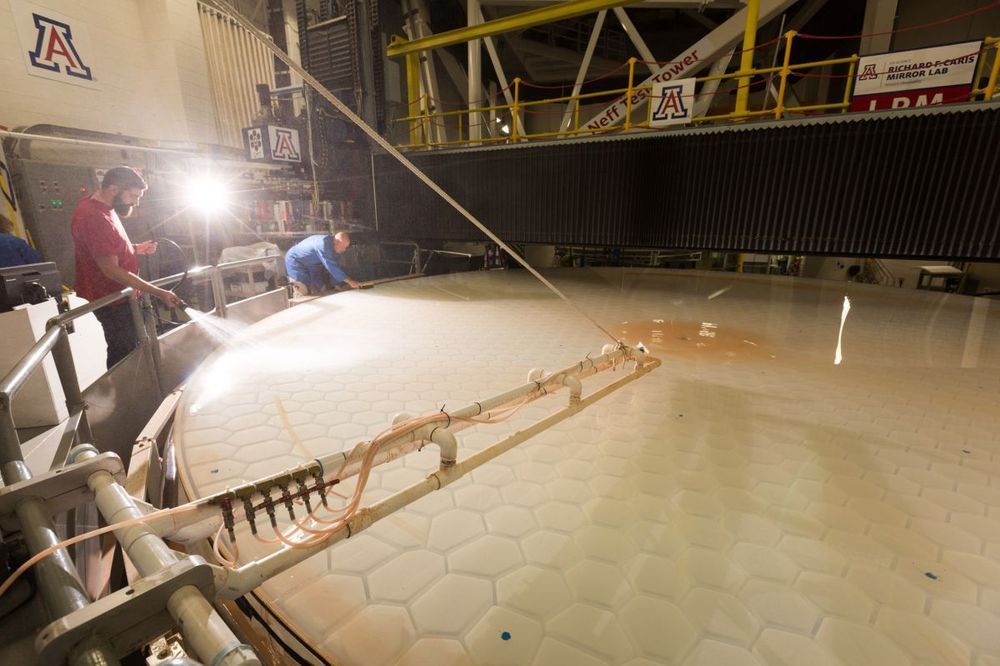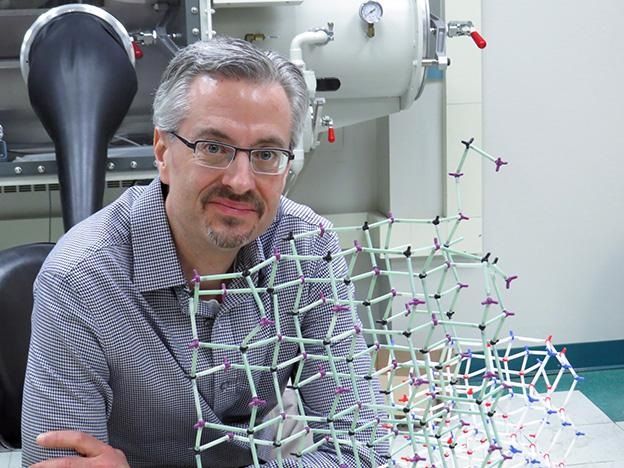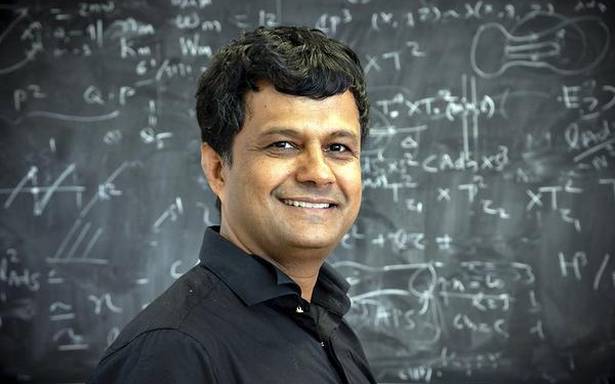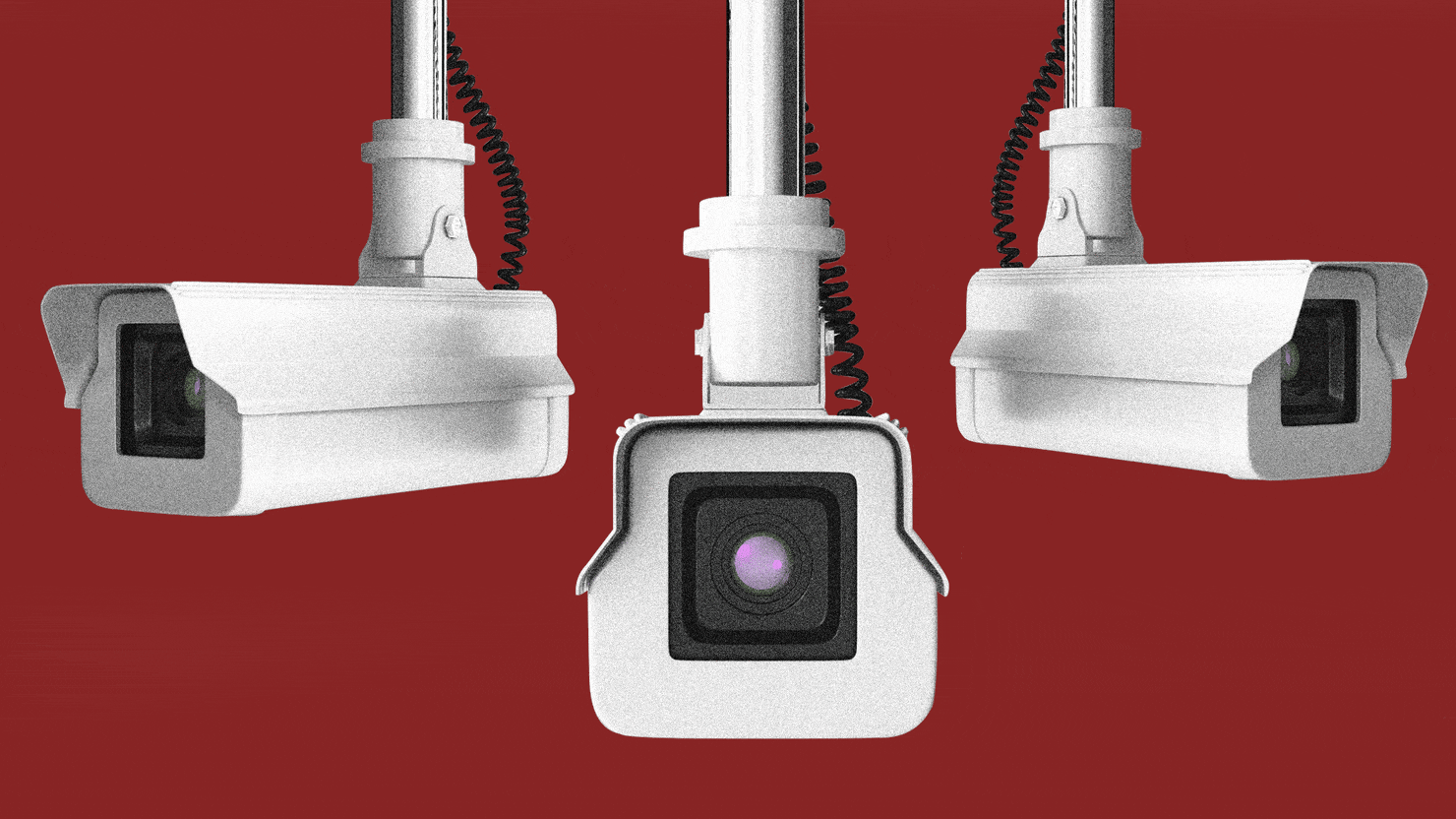Technicians at the University of Arizona’s Richard F. Caris Mirror Lab have finished polishing the front surface of a second 27.6-foot-wide (8.4 meters) GMT mirror, a precise and exacting process that took 10 months.



This week’s podcast features an interview with Ray LaPierre, who heads up the department of engineering physics at McMaster University in Canada. Ray talks to fellow Canadian Hamish Johnston about his research in semiconductor nanowires, in particular for use in photonics and quantum computers, and also shares his experiences of working at JDS Uniphase during the telecoms boom.
Physics World’s Anna Demming also joins the podcast to describe a flurry of new results in the emerging field of twistronics – where two layers of graphene are stacked on top of each other but twisted at a slight angle to each other. The discovery last year that bilayer graphene can become a superconductor if the two graphene layers are twisted at the so-called magic angle of 1.1º won Physics World’s 2018 Breakthrough of the Year, and since then the race has been on to investigate other angle-dependent properties of twisted bilayer graphene. Anna describes how different research teams are now trying to work out what causes these intriguing effects.
We also talk to industry editor Margaret Harris about the importance of technology and engineering for scientific progress. Margaret shares her own “light-bulb” moment, when she realized that new laser technology could have saved hours of experimental time during her PhD, and also highlights several articles in the latest Physics World Focus on Instruments and Vacuum that highlight how breakthrough scientific discoveries rely on developments in the enabling technologies – including the first images of a black hole that were revealed in April.

Atish Dabholkar, a theoretical physicist from India, has been appointed as the new director of Abdus Salam International Centre for Theoretical Physics (ICTP) in Trieste, Italy.
He is currently the head of ICTP’s high energy, cosmology and astroparticle physics section. He joined the centre in 2014 on secondment from Sorbonne Université and the National Center for Scientific Research, where he has been a research director since 2007. Mr. Dabholkar will take up his duties as ICTP director with the rank of Assistant Director General of the United Nations Educational, Scientific and Cultural Organization (UNESCO). He will succeed Fernando Quevedo, who has led the centre since 2009.
“It’s an honour and a great responsibility to be chosen as ICTP’s next director. ICTP is a one-of-a-kind institution with a very high level of research and a unique global mission for international cooperation through science. It was envisioned as an international hub for excellence in science and as an anchor to build scientific capacity and a culture of science around the globe. This vision remains valid today even after five decades, but needs to be implemented keeping in mind changing realities and priorities,” he said in a statement.



The phenomenon known as “tunneling” is one of the best-known predictions of quantum physics, because it so dramatically confounds our classical intuition for how objects ought to behave. If you create a narrow region of space that a particle would have to have a relatively high energy to enter, classical reasoning tells us that low-energy particles heading toward that region should reflect off the boundary with 100% probability. Instead, there is a tiny chance of finding those particles on the far side of the region, with no loss of energy. It’s as if they simply evaded the “barrier” region by making a “tunnel” through it.
It’s very important to note that this phenomenon is absolutely and unquestionably real, demonstrated in countless ways. The most dramatic of these is sunlight— the Sun wouldn’t be able to fuse hydrogen into helium without quantum tunneling— but it’s also got more down-to-earth technological applications. Tunneling serves as the basis for Scanning Tunneling Microscopy, which uses the tunneling of electrons across a tiny gap between a sharp tip and a surface to produce maps of that surface that can readily resolve single atoms. It’s also essential for the Josephson effect, which is the basis of superconducting detectors of magnetic fields and some of the superconducting systems proposed for quantum computing.
So, there is absolutely no debate among physicists about whether quantum tunneling is a thing that happens. Physicists get a bit twitchy without something to argue over, though, and you don’t have to dig into tunneling (heh) very far to find a disputed question, namely “How long does quantum tunneling take?”

A new malware strain is being distributed by threat actors via exploit kits like Fallout and RIG to hide malicious network traffic with the help of SOCKS5 proxies set up on compromised computers.
The malware, provisionally named SystemBC by the Proofpoint Threat Insight Team researchers who found it, uses secure HTTP connections to encrypt the information sent to command-and-control servers by other strains dropped on the infected machines.
“SystemBC is written in C++ and primarily sets up SOCKS5 proxies on victim computers that can then be used by threat actors to tunnel/hide the malicious traffic associated with other malware,” says Proofpoint.

Warnings about connected vehicle vulnerabilities have been a steady drumbeat for years. Now a consumer-advocacy group is putting it in starker terms, suggesting a mass cyberattack against such vehicles could lead to Sept. 11-level casualties.
California-based Consumer Watchdog has issued a 49-page report that paints the dire picture and urges automakers to install 50-cent “kill switches” to allow vehicles to be disconnected from the Internet. The report highlights numerous widely reported instances of remote vehicle hacking, such as a 2015 demonstration involving a Jeep Cherokee left crawling along a St. Louis-area freeway.
“Millions of cars on the internet running the same software means a single exploit can affect millions of vehicles simultaneously. A hacker with only modest resources could launch a massive attack against our automotive infrastructure, potentially causing thousands of fatalities and disrupting our most critical form of transportation,” the group warns.


O.o!
A team of scientists recently determined certain quantum particles can regenerate after they’ve decayed. This has grand implications for the future of humanity, quantum computing, and intergalactic graffiti.
Theoretical physicists from the Technical University of Munich and the Max Planck Institute conducted simulation experiments to determine that certain quasiparticles are essentially immortal. Per the second law of thermodynamics nothing lasts forever, but these quantum particle fields can reassemble themselves after decaying – just like the phoenix from Greek mythology.